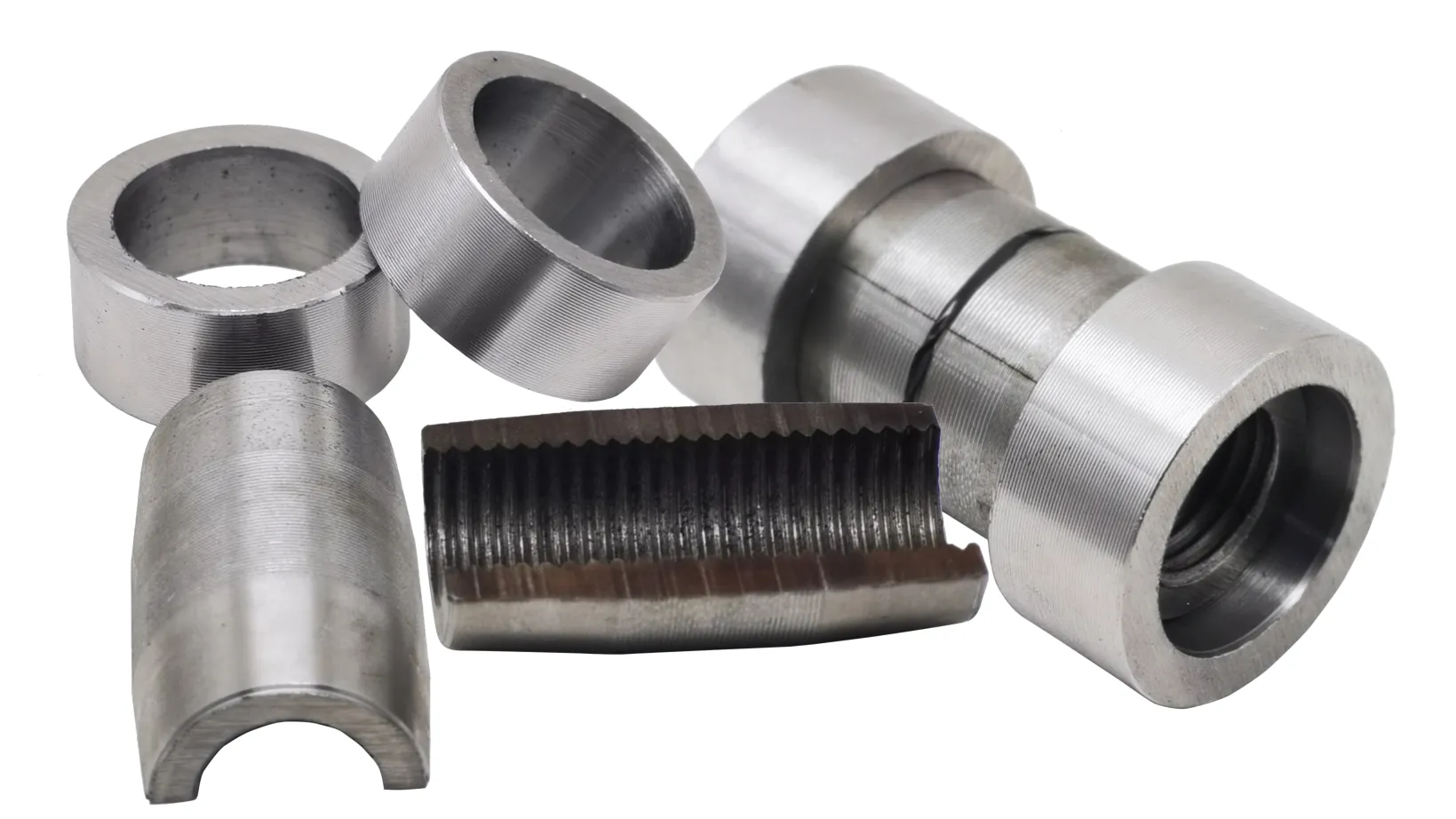Products Description
Introduction
The extrusion-type split sleeve is an efficient mechanical connection device for reinforcing bars based on the rib stripping and rolling straight thread connection technology. It consists of two axially symmetrical semi-circular sleeve-shaped sleeves and a lock sleeve. The core design of this device lies in:
1. Split structure: The inner walls of the semi-circular sleeves are machined with precise straight threads, which tightly engage with the external threads of the reinforcing bar's end; the two ends of the sleeves are axially locked by the lock sleeve, which uses the internal conical surface of the lock sleeve and the external conical surface of the sleeve to form mechanical self-locking, ensuring a stable connection that cannot be disengaged by itself.
2. Working principle: ◦ The reinforcing bar end is formed by stripping and rolling into straight threads, and then the two semi-circular sleeves are interlocked and inserted into the reinforcing bar. ◦ The lock sleeve is tightened using a special wrench or hydraulic equipment. The internal conical surface of the lock sleeve forces the semi-circular sleeves to radially contract, tightly engaging with the reinforcing bar's threads, while the axial locking force disperses the stress and achieves equal strength connection.
3. Materials and processes: It is manufactured from 45# high-quality carbon structural steel or alloy steel, processed through cold drawing, rolling, and heat treatment. The tensile strength is ≥ 600 MPa, and the yield strength is ≥ 355 MPa. The surface is treated with galvanization or phosphating, and the salt spray test lasts for ≥ 1000 hours without rust, meeting the requirements of JGJ 107-2016 "Technical Code for Mechanical Connection of Reinforcing Bars".
Primary purpose
1. Construction Engineering:
◦ Suitable for the connection of beams, columns, and foundation reinforcement in scenarios such as high-rise buildings, bridges, subways, and nuclear power plants. It is particularly suitable for complex situations such as the of reinforcement cages and the connection between prefabricated components and cast-in-place concrete. For example, this technology was adopted in the 6th and 7th berths of Caomen Port project, reducing the time for reinforcing cage by 70% and achieving consistent quality of the piles, which met the standards of Class 1 piles.
◦ It can connect reinforcing bars of different diameters (diameter mismatch connection) or reinforcing bars fixed in concrete, with strong flexibility.
2. Special Environments:
◦ Not affected by rain, snow, or low temperatures (-25°C to + 60°C), it can be operated in humid or cold environments, and no open flame is required, ensuring high safety.
3. Seismic and Dynamic Load Structures:
◦ The anti-loosening design of the lock sleeve and the dispersion of stress through double-threaded interlocking have excellent fatigue performance, capable of withstanding more than 2 million repeated loads, suitable for dynamic load engineering such as bridges and rail transit.
4. Power Engineering:
◦ In the cast-in-place pile foundation of ultra-high voltage lines, it replaces the traditional welding process, solving the problems of long reinforcing cages and the difficulty of on-site welding, shortening the construction period and reducing the risk of hole collapse.



